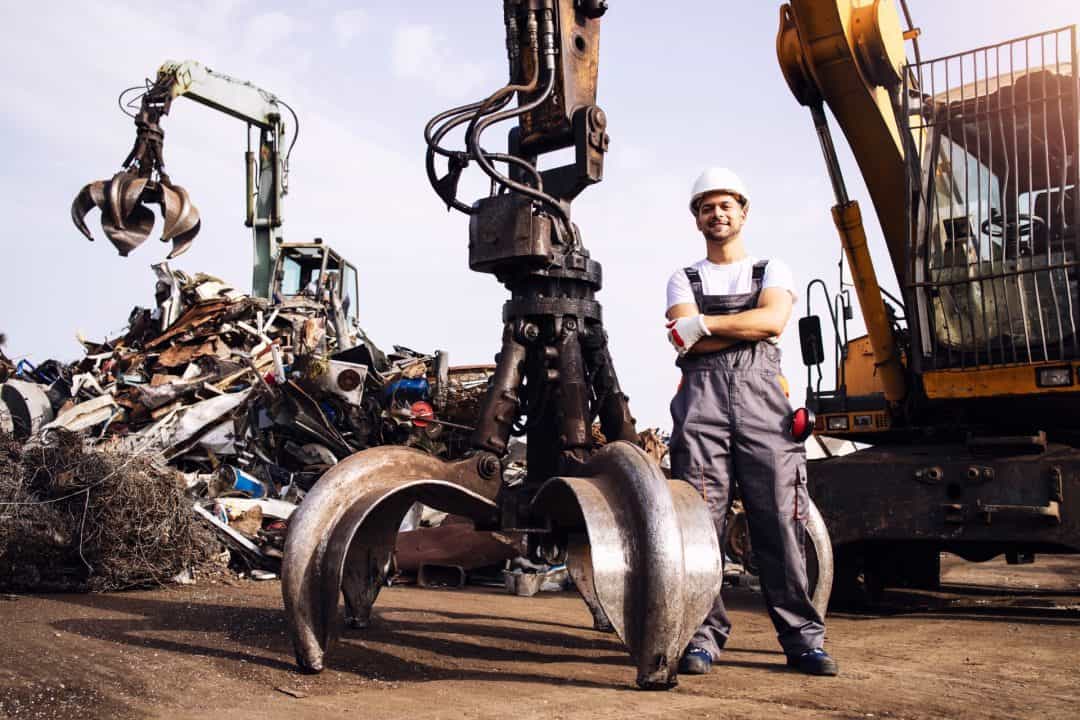In 2022, 160 Australians lost their lives as a result of work-related accidents, the majority of these caused by vehicle-related collisions (car, truck, tractor etc.) Then there is the additional cost of non-fatal accidents, with over 130,000 serious accident claims lodged, averaging 7 weeks in time lost per claim. (source Safe Work Australia)
Recycling Yard Risks

A typical Australian recycling yard presents risks to its’ workforce every day, with heavy mobile machinery like pickers and forklifts regularly operating in the same general area as workers. The most common safety hazards in Australian recycling yards are:
- Mobile plant related incidents (collisions, tipping etc.)
- Machinery/ vehicle noise
- Falling/ moving objects
- Worker fatigue
- Strain from manual labour
- Pedestrian accidents
- Contact with harmful substances
- Unsafe racking
- Improper storage of flammable/ dangerous goods
- Broken glass/ sharp objects
- Respiratory hazards
Load-shifting equipment (powered mobile plant like cranes, forklifts, ride-on pallet movers, walkie stackers, pallet jacks, trolleys etc.) present pedestrian safety risks such as:
- Collisions with pedestrians and/ or loads falling onto them
- Rollovers and equipment moving unexpectedly, creating a crushing hazard
- Forklifts/ cranes unable to stop quickly
- Reduced visibility when loaded
In response, the safe movement and storage of items has to be the #1 priority in any recycling yard. Introducing safety initiatives or additional safety training can help lower the on-site risks, but still the danger is present.
How Recycling Yard Managers Mitigate Risk
You can consider the layout of your recycling yard and put physical barriers in place to separate pedestrians and vehicles, and introduce measures to reduce risk such as:
- Minimising the cross flow of traffic, intersections and eliminating blind spots.
- Clearly marking pedestrian walkways or using temporary physical barriers to separate pedestrians from roadways and powered mobile plant operating areas where pedestrians and vehicles often interact based on speed limits, stopping distances and efficient workflow.
- Defining areas where powered mobile plant are used as ‘pedestrian exclusion zones’ plus excluding powered mobile plant from pedestrian walkways and work areas.
- Using line markings and marker posts in docking areas to indicate distances from the dock.
However, introducing these safety measures to your recycling yard may still not be enough…
Recycling Yard Risks- The Human Factor
Initiatives such as painted line markings and verbal/ written notices to stay a certain distance clear of vehicles are only effective so long as your staff and site visitors are aware of these directions and uphold them. Human error and negligence remain a factor. Regardless of your industry, there are also legal obligations to uphold worker safety.
With these daily risks ever present, could your Recycling Yard use a BodyGuard Pedestrian Safety Warning system?
